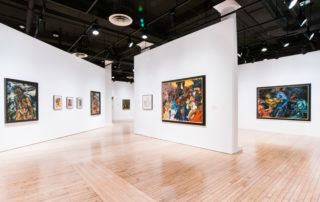2019, January 23 – Arielle Budick in Financial Times, p. 6
"Sustained by art through the darkness. Fritz Ascher’s work, now on show in New York, reflects his reclusive, obsessive nature and his turbulent life.” (scroll down for translation into German) Fritz Ascher's "Sunflower", c. 1958. ©Bianca Stock You have probably never heard of Fritz Ascher, a passionate and peculiar painter who, nearly 40 years after his death, is finally getting a smidgen of renown at New York’s Grey Art Gallery. Ascher belonged to a generation of German artists the Nazis hounded into hiding – or worse – leaving a chapter in the history of art truncated and brimming with might-have-beens. He was lucky enough to survive, though the war’s after-effects kept shuddering [...]








